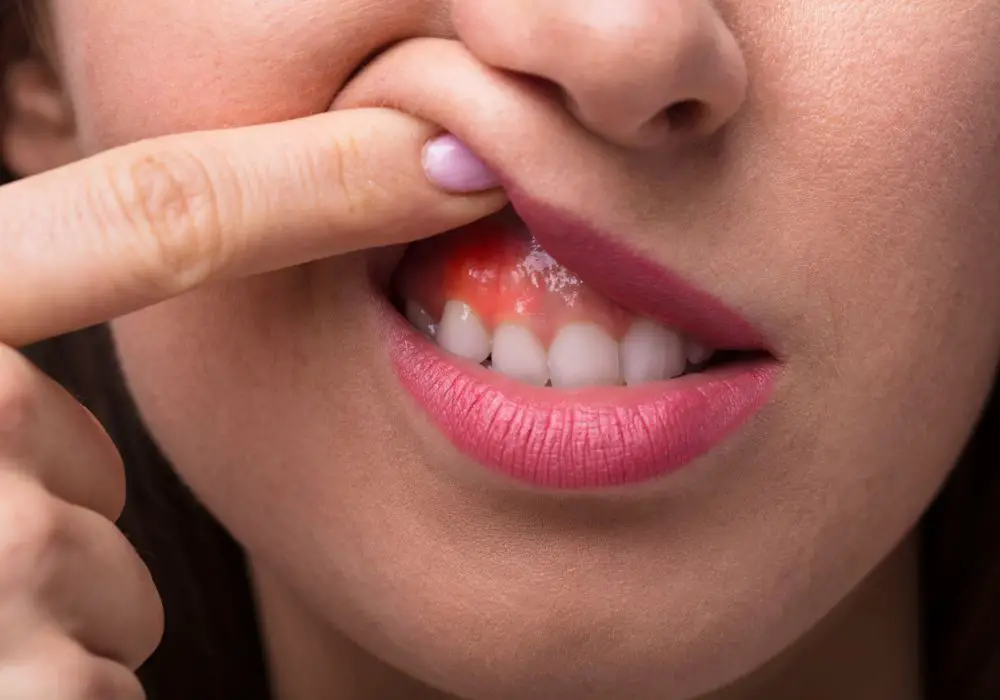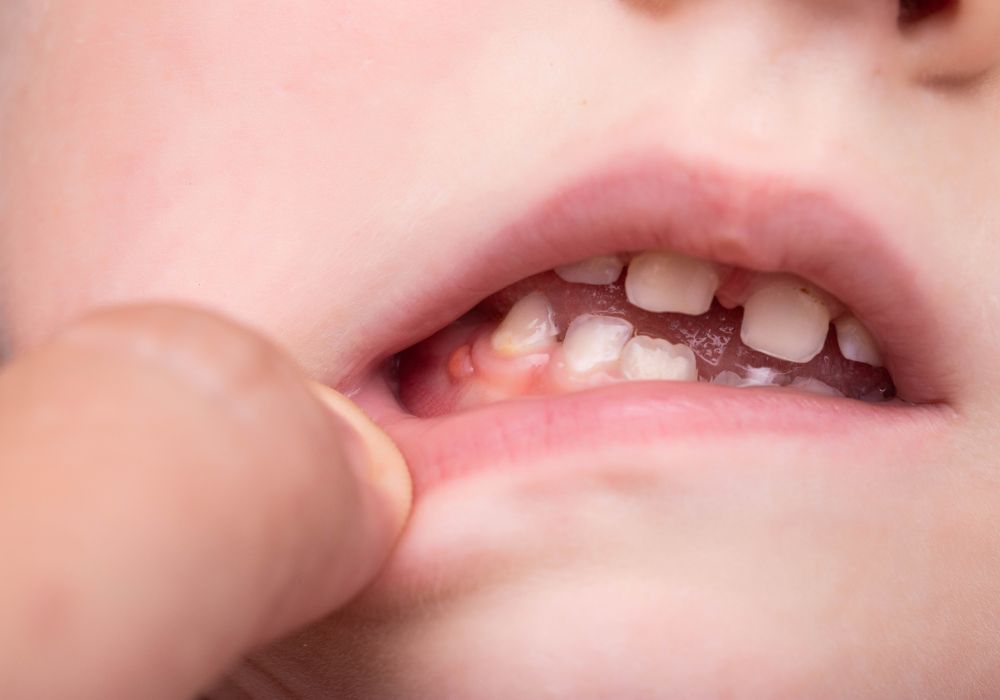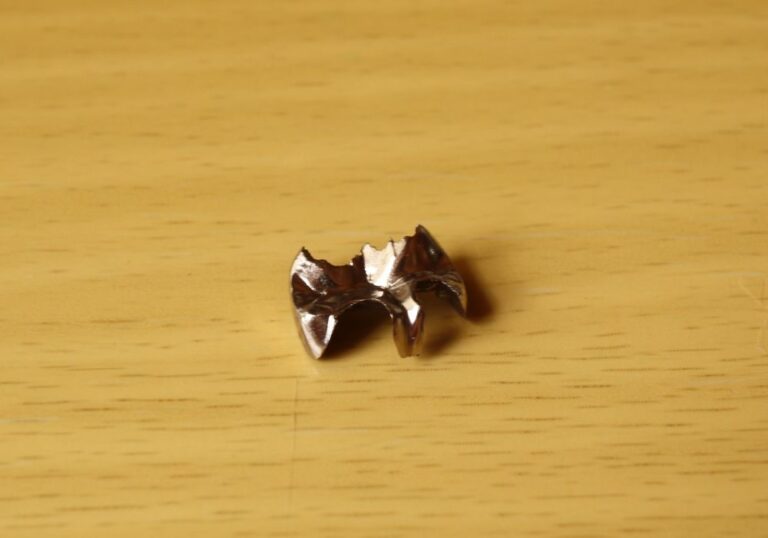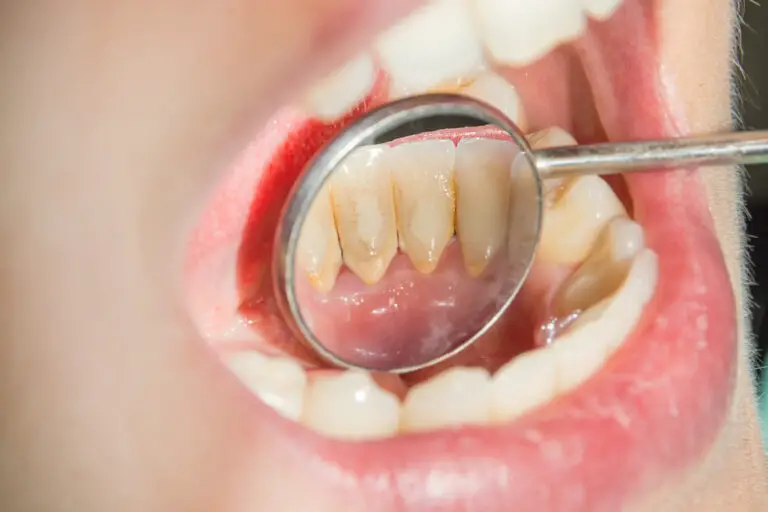Having a swollen, enlarged gum in just one area can be worrying. Localized gum swelling is fairly common and has a range of potential causes, from mild gingivitis to serious dental infections and oral cancer. Identifying the source of the swelling based on your symptoms helps your dentist determine the appropriate treatment.
With timely diagnosis and proper care, localized gum swelling can be resolved without major complications. But leaving it unchecked allows minor issues to worsen and serious conditions to spread. Understanding the common causes of swollen gums in one spot helps you seek prompt dental evaluation and treatment when needed.
What causes localized gum swelling?
There are a number of potential causes for swelling or enlargement of your gums in one area. Here’s an in-depth look at some of the most common reasons for localized gum swelling:
1. Gum abscess
A gum abscess occurs when an infection develops in the space between the tooth and gum. It leads to a buildup of pus in the tissues of the gum, causing significant pain and swelling.
Gum abscesses are often caused by severe gum disease, tooth decay, or damage to the tooth’s surface. Cracks in the enamel allow bacteria to enter the pulp of the tooth. The infection then spreads to the root tip in the jawbone and forms an abscess in the gums.
In addition to swelling in one spot, gum abscesses cause throbbing pain that worsens with pressure. You may also notice:
- Red, bleeding gums around the affected tooth
- Bad breath or foul taste coming from the area
- Sensitivity to hot and cold around the tooth
- Swollen lymph nodes under the jaw
- Fever and generally feeling unwell if the infection spreads
Leaving a gum abscess untreated can allow the infection to destroy surrounding bone and tissue. This can ultimately lead to tooth loss. See your dentist right away if you suspect an abscess. Treatment involves draining the pus and disinfecting the area. You may also need antibiotics and a root canal or tooth extraction.
2. Periodontal disease
Advanced gum disease (periodontitis) happens when gingivitis is left untreated. It damages not only your gum tissues but also the bones and ligaments that support your teeth.
Periodontitis occurs when plaque is allowed to build up along and under the gumline due to poor oral hygiene. The toxins from plaque bacteria trigger chronic inflammation. Your immune system fights back, breaking down gum tissue and bone.
Eventually pockets form between the teeth and gums. These pockets fill with bacteria, pus and debris. One sign is a swollen, puffy gum in an area where a deep pocket has developed.
Other symptoms include receding gums, loose teeth, halitosis, and pus discharge around the teeth. Without treatment, the pockets deepen and the teeth loosen further until they eventually fall out.
If you have swollen gums and signs of periodontitis, see your dentist right away. You’ll likely need deep cleaning under the gums to remove plaque and tartar. Gum surgery is sometimes required to treat advanced cases.
3. Developmental abnormalities
Some people have naturally enlarged or excess gum tissue in certain areas, which can look like swollen gums. It may be due to:
- Gingival hyperplasia – genetic overgrowth of the gums, sometimes worsened by certain medications like phenytoin or nifedipine. The enlarged gums are usually painless.
- Maxillary/mandibular tori – benign bony growths on the palate or lingual side of the lower jaw. Tori generally require no treatment unless they become large enough to interfere with speech, swallowing or denture use.
- Gingival cysts – these fluid-filled sacs on the gums are usually painless and slowly get larger over time. Surgical removal may be done for esthetic reasons or if the cyst is damaged.
Your dentist can identify these types of benign gum enlargements through visual examination and dental x-rays. They typically require no treatment unless problems develop.
4. Oral cancer
Oral cancer most often starts as a painless ulcer or swelling in the gums, tongue, inside of the cheeks or on the floor of the mouth. The lump or thickened area may bleed easily when touched.
As the cancer grows, it can invade and destroy surrounding healthy tissue, causing pain and tooth mobility. Swelling in the jaw, neck or lymph nodes develops as the cancer spreads. If not treated promptly, it can be disfiguring and life-threatening.
See your dentist about any enlarged, swollen or ulcerated mouth lesion that persists longer than 2 weeks. An oral surgeon will do a biopsy to check for cancer cells. Early detection and treatment are critical to cure oral cancer.
5. Leukemia

Leukemia refers to cancers of the blood cells and bone marrow. Acute leukemias cause rapid, uncontrolled production of abnormal white blood cells. Along with fatigue, bruising and infections, leukemia can manifest as swollen, tender gums.
The abnormal white blood cells invade and disrupt the normal healthy cells. So leukemia causes extensive gum inflammation and bleeding. Acute lymphocytic leukemia also sometimes causes gum overgrowth.
Unexplained, persistent changes in gum health like swelling, soreness or bleeding warrant an immediate visit to your dentist. You’ll likely be referred to a hematologist for blood tests and examination to diagnose or rule out leukemia.
6. Oral lichen planus
Oral lichen planus is an inflammatory condition affecting the mucus membranes in your mouth. It often appears as lacy white patches or streaks on the inside of the cheeks or gums. It can cause painful, swollen gums.
The exact cause is unknown, though it seems to be an immune reaction to a drug or viral trigger. Oral lichen planus is considered precancerous – a small percentage of cases do turn cancerous. There’s no cure, but treatments can reduce symptoms.
See your dentist promptly if you suddenly develop patchy white spots or swollen gums accompanied by burning mouth pain. A biopsy is needed to confirm the diagnosis. Your dentist will monitor you for any changes that could indicate cancer.
7. Medication effects
Growths or swelling in the gum tissue are potential side effects of certain medications:
- Oral contraceptives – A hormonal reaction to birth control pills may cause the gums to become inflamed and overgrown. Women sometimes notice enlarged, red gums that bleed easily several months after starting oral contraceptives. Stopping the medication or switching brands often resolves the gum swelling.
- Diltiazem and nifedipine – Calcium channel blockers used to treat high blood pressure and heart conditions can cause swollen, painful, overgrown gums. The gums may bleed spontaneously. Gentle dental cleanings, gingival trimming and using alternative medications helps manage the issue.
- Immunosuppressant drugs – Medications that suppress the immune system leave people vulnerable to infections, including viral infections that can promote wart-like growths on the gums. These bumps on the gums are usually not harmful, but may be unsightly and require removal.
- Diphosphonates – Drugs like alendronate used to treat osteoporosis and other bone diseases can very rarely cause an inflammatory reaction in the jaw bones that leads to swelling, pus, loose teeth and exposed bone. Stopping the medication and taking antibiotics resolves the condition.
Let your dentist know if you start any new medication and notice gum changes a short time later. A different medication may eliminate the side effect.
Identifying the likely cause
Localized gum swelling can have many causes. Paying close attention to the details helps determine the potential source:
Consider the location
- Swelling on the gum tissue around a particular tooth may indicate:
- Dental abscess at the root
- Advanced periodontal disease
- Cyst or tumor
- Generalized enlargement of the gums could be:
- Gingival hyperplasia
- Leukemia
- Oral contraceptive side effect
- Patchy white spots on the insides of the cheek/gums point to oral lichen planus
Note pain level
- Severe, throbbing pain suggests a dental abscess
- Mild to moderate soreness may signal gingivitis or periodontitis
- Little to no pain indicates benign gingival hyperplasia or oral cancer
Check for related symptoms
- Tooth pain, fever, foul taste indicate dental infection
- Bleeding, receding gums suggest periodontal disease
- Spontaneous bleeding could be leukemia
- Dry mouth, changes in taste point to oral lichen planus
Consider risk factors
- Poor oral hygiene often leads to plaque-induced gingivitis
- Older age increases cancer risk
- Bone medications like Fosamax are linked to jaw necrosis
- Immunosuppressant drugs may cause viral wart-like gum bumps
Your dentist will go over your symptoms, medical history, and risk factors. Dental x-rays and tissue biopsies help confirm the diagnosis. Treatment will depend on the cause.
Treatments for swollen gums in one area

Identifying the underlying problem is key to appropriate treatment of localized gum swelling.
Treating gum abscesses
If the swelling is due to a gum abscess, treatment focuses on draining the pus and controlling the infection. Your dentist may:
- Prescribe antibiotics like penicillin or clindamycin to resolve the infection
- Perform root planing to remove bacteria from the root surface
- Drain the abscess by unroofing it and rinsing with antiseptic
- Do a root canal if the tooth pulp is infected and can’t be saved
- Extract the tooth if the infection is severe and persists despite other measures
Proper dental care after the abscess resolves prevents recurrence. See your dentist promptly if the swelling returns.
Treating gingivitis/periodontal disease
For swollen gums caused by gum inflammation and periodontal disease:
- Improve your daily oral hygiene – gentle flossing and brushing twice a day
- Get deep dental cleanings to remove plaque below the gumline
- Use antiseptic medicated mouthwashes prescribed by your dentist
- Have periodontal surgery to remove diseased gum tissue if needed
- Take antibiotics or antimicrobial gels to control infection
- Get laser therapy to remove inflamed gum tissue and stimulate healing
- Have gum grafts, guided tissue regeneration or bone grafting procedures for severe damage
Regular dental cleanings and daily oral hygiene keeps periodontal disease in check. Report any recurrence of gum swelling to your dentist promptly.
Managing gingival hyperplasia
For enlarged gums due to gingival hyperplasia:
- Take excellent care of your teeth and gums with brushing, flossing and cleanings
- Have your dentist trim or contour areas of overgrown gum tissue
- Switch medications if yours are causing the hyperplasia
- Use a custom-fitted mouthguard at night to keep your gums separated from your teeth
You’ll need regular gum trimming procedures to manage hyperplasia. Proper home care prevents secondary infections.
Treating oral cancer
Treatment for cancerous gum swellings may involve:
- Surgical excision to remove malignant tumors or growths
- Radiation to destroy cancer cells and reduce tumor size
- Chemotherapy with anticancer drugs to kill cancer cells
- Immunotherapy drugs that boost the immune response against cancer cells
- Palliative care to control pain and support nutrition
reconstructive surgery can help restore oral function after tissue removal. Your doctors will monitor you closely for recurrence after cancer treatment. Notify them about any abnormal swelling.
Resolving medication side effects
If your gum swelling stems from a medication reaction:
- Use over-the-counter anti-inflammatories to reduce swelling
- Practice gentle but thorough oral hygiene
- Have your doctor switch you to an alternative medication
- Take medication prescribed to manage the gum hyperplasia
- Consider dental gum contouring procedures for removal of excess tissue
Let your dentist and doctor know about any swelling or bleeding after starting new medications.
The specific treatments will be tailored to the cause of your localized gum swelling. Follow your dentist’s and oral surgeon’s advice for proper management and aftercare. Report any concerns promptly.
Home remedies for gum swelling
While waiting to see your dentist, you can try some home remedies to relieve minor gum swelling and pain:
- Saltwater rinse – Dissolve 1 teaspoon salt in a cup of warm water. Swish it around your mouth for 30 seconds, 2-3 times a day. Saltwater helps reduce inflammation and infection.
- Hydrogen peroxide – Mix equal parts 3% hydrogen peroxide and water. Swish around the swollen gum area for 30 seconds, 1-2 times daily. Peroxide kills bacteria.
- Cold compress – Wrap ice cubes or a cold pack in a washcloth. Apply to the swollen gum for 10-15 minutes at a time to minimize swelling.
- Clove oil – Soak a cotton swab in clove oil diluted with a little olive oil. Dab it onto the swollen gum 1-2 times a day. Clove oil has natural pain relief and antiseptic properties.
- Turmeric paste – Make a paste with turmeric powder and water. Apply to the swollen gum area for a few minutes daily. Turmeric contains curcumin to reduce inflammation.
- Aloe vera gel – Use a clean finger or cotton tip to rub pure aloe vera gel directly onto the swollen gums several times a day. It soothes inflammation.
These home treatments provide temporary relief only. See your dentist to get proper diagnosis and care for your swollen gum.
When to visit the dentist?

Make an appointment with your dentist promptly if you have:
- Significant swelling on your gum around one tooth
- Swelling with pus, bleeding, or soreness when chewing
- A firm, painful, red lump on your gum
- A swollen gum that doesn’t respond to saltwater rinses or OTC remedies
- Gum swelling that persists more than 1-2 weeks
- A swollen gum along with tooth mobility, pain or sensitivity
- Patchy white spots and inflamed gums
- Jaw pain or swelling under your chin
- Difficulty swallowing, chewing, or opening your mouth due to a swollen gum
Don’t delay having your dentist examine any localized gum swelling. An accurate diagnosis requires x-rays, examination of your mouth tissue, and possibly biopsy. Waiting allows minor problems to worsen and major issues to spread.
Preventing gum swelling
You can help avoid developing swollen gums by:
- Brushing twice daily and flossing once daily
- Getting professional teeth cleanings every 6 months
- Replacing your toothbrush every 3-4 months
- Using antimicrobial mouthwashes
- Eating a balanced diet low in sugary foods
- Drinking lots of water to keep your mouth moist
- Not smoking or chewing tobacco
- Managing health conditions like diabetes that increase gum disease risk
- Seeing your dentist about any medication side effects
- Getting dental injuries evaluated promptly
- Wearing a mouthguard during contact sports
Excellent oral hygiene prevents plaque buildup and gum infections that can cause swelling. Regular dental visits allow early detection and treatment of any gum problems.
FAQs about swollen gums in one spot:
Is a swollen gum an emergency?
In most cases, a swollen gum is not a medical emergency. However, it does require prompt dental attention for an accurate diagnosis and treatment. Leaving it untreated allows the problem to worsen. A severely swollen, painful gum with pus and fever can indicate a spreading infection that may become an emergency if left too long. When in doubt, see your dentist right away.
Can swollen gums go down on their own?
Mild gum swelling from gingivitis may resolve on its own with improved oral hygiene. But significant, localized gum swelling usually indicates an underlying dental problem that needs treatment, like an abscess. It won???t resolve on its own. Trying to wait it out without professional dental care can lead to complications like tooth loss.
Should I put ice on a swollen gum?
Yes, applying an ice pack or cold compress to a swollen gum can help provide short-term pain relief and reduce inflammation. Wrap the ice in a thin towel and hold it against the swollen gum area for 10-15 minutes a few times a day until you can see your dentist. Don???t put ice directly on the skin.
What happens if you leave a swollen gum untreated?
Leaving a swollen gum untreated allows the condition causing it to worsen over time. An untreated gum infection can destroy tissue and bone, causing tooth loss. Gum swelling related to oral cancer won’t resolve without medical treatment. And periodontal disease will continue deteriorating your gums and jaw bone if not treated properly. See your dentist right away for diagnosis and care.
Can swollen gums be prevented?
Yes, practicing good oral hygiene every day prevents plaque buildup that causes gum swelling and inflammation. Brush teeth twice a day, floss daily, use antimicrobial mouthwash, get regular dental cleanings and exams, and tell your dentist about any medication side effects. Stopping smoking also lowers your gum disease risk.
Conclusion
Noticing a swollen gum in just one area can be alarming. But various common dental health issues can cause localized gum swelling, like gum abscesses, oral cancer, medication side effects and periodontal disease. Identifying the likely cause based on your symptoms helps guide the right treatment approach.
Don’t ignore a swollen gum or wait for it to resolve on its own. See your dentist promptly for an accurate diagnosis. Timely treatment is essential to cure gum infections, relieve pain, prevent tooth loss, and minimize oral cancer spread. With proper dental care, swollen gums can be managed and further problems averted.






